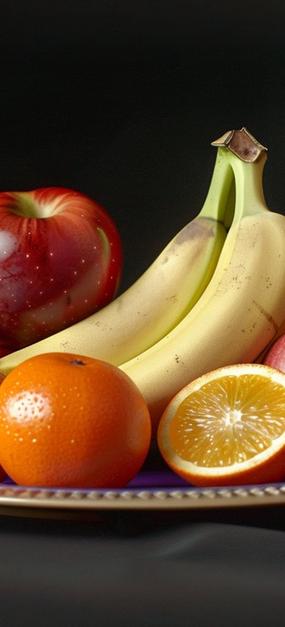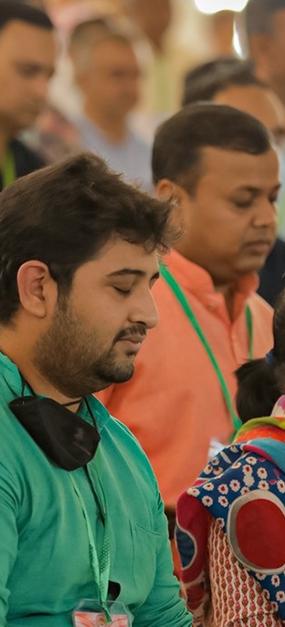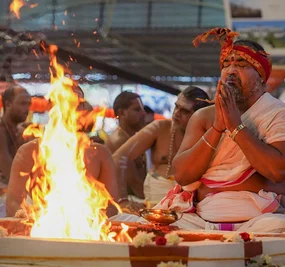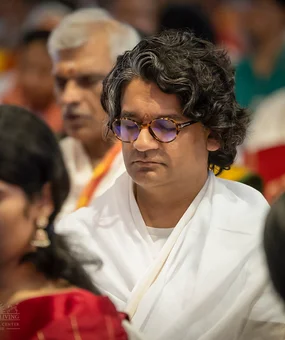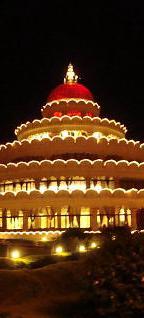“We fast not to please the Divine, but to cleanse our body.” – Gurudev Sri Sri Ravi Shankar
During childhood, you may have noticed people around you observing fasts during Navratri. Were you ever intrigued by the different varieties of food that appeared during this time? Regular rice was often replaced with sabudana or singhara (water chestnut) flour. Wheat flour was set aside in favor of rajgira (amaranth) flour. The diet saw an increase in the consumption of fruits and juices. The list of fasting foods seemed endless, each offering a unique taste and nutritional benefit.
Sabudana: Nutritional Benefits
One of the popular fasting foods during this period is sabudana. Sabudana is cherished for its light and easily digestible qualities. It’s often prepared in various forms, such as sabudana khichdi, sabudana vada, and sabudana kheer.
It is a rich source of carbohydrates, proteins, vitamin K, calcium, and potassium, making it excellent for fasting. It helps cool the body, supports a healthy scalp, keeps the skin fresh, and ensures a light stomach, making it an ideal choice during fasting periods
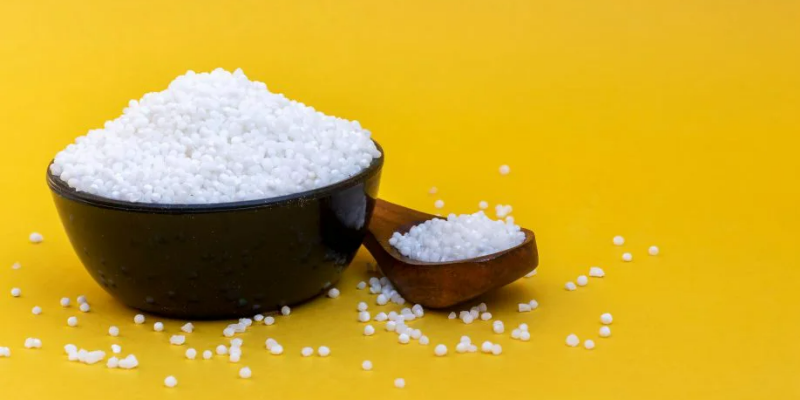
Sabudana is rich in carbohydrates.
Gluten-Free and Nutritious Samak – Popular Fasting Substitute
Samak is a gluten-free, nutritious, and fiber-rich seed often used as a substitute for rice during fasting periods. Its easy digestibility makes it an excellent choice for maintaining comfort during Navratri. Samak rice can be enjoyed plain or used to create a variety of dishes, including dosa, dhokla, and pulao. This versatile ingredient not only offers a satisfying alternative to rice but also supports your dietary needs with its high fiber content and nutrient profile.
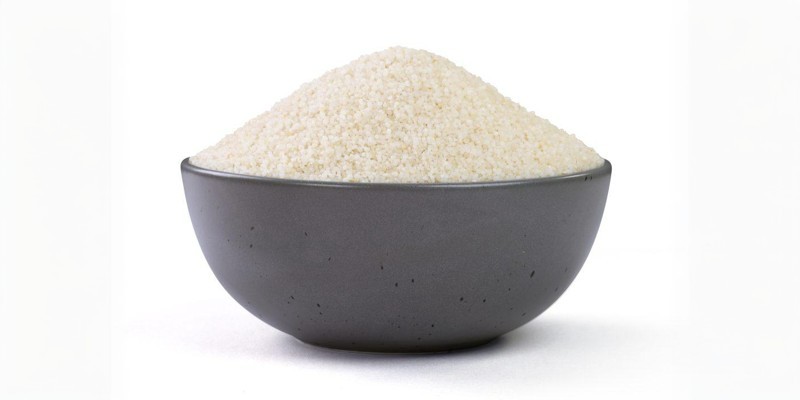
Samak is a fibre-rich seed.
Combining the goodness of samak with sabudana, you can make a unique delicacy—‘samak-dana’ dhokla. This dish not only satisfies your taste buds but is also light on the stomach.
Ingredients
For dhokla batter
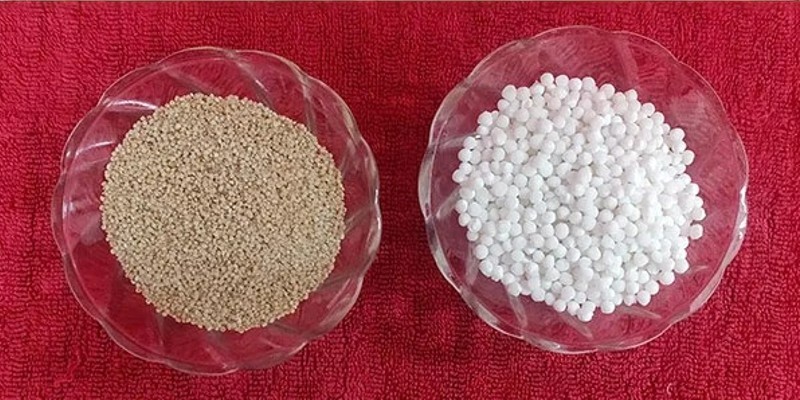
- Samak chawal – 1 cup
- Sabudana/Sago pearls – 4 tbsp or ⅓ cup
- Ginger paste – 1 tsp
- Green chilli paste – 1 tsp
- Sendha salt – to taste
- Sugar (optional) – 1 tsp
- Curd – ½ cup
- Water – ¾ cup
- Fruit Salt – ½ -¾ tsp (one Eno sachet)
- Oil – for greasing the bowl
For Tempering
- Oil – 2 tbsp (groundnut oil, prefer cold pressed oil)
- Cumin or mustard seed – 1 tsp
- Sesame seeds – 1 tsp
- Green Chilli – 2 nos (slit)
- Curry Leaves (optional) – a handful
- Coriander sprigs (optional) – few
- Lemon juice – 2tsp
- Sugar – 1tsp
Procedure for Dhokla
Step 1: Dry grind samak chawal into a grainy powder. Avoid grinding it into a fine powder. If you prefer, you can wash the samak before use; after washing, sieve out the excess water and then grind. Some also choose to soak the samak chawal and grind it after 3-4 hours.
Step 2: Dry grind raw sabudana into a coarse powder.
Step 3: Mix in salt, curd, and ginger-green chili paste. If you don’t like ginger, you can omit it. Add water to achieve a flowing batter consistency. Set the mixture aside to rest overnight or for 2-4 hours.
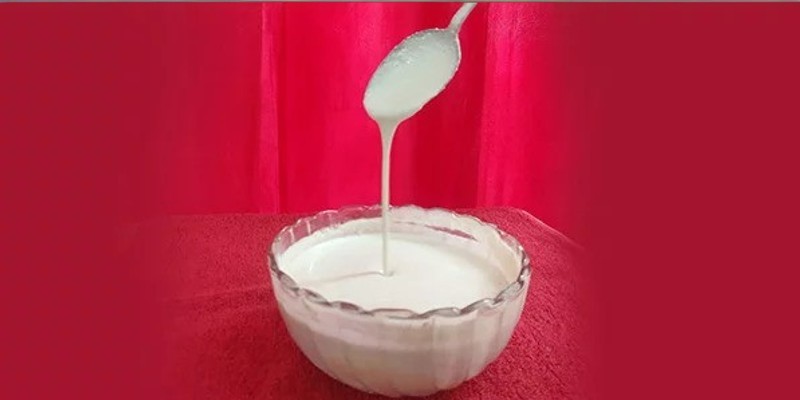
The batter should have a flowing consistency.
- Step 4 – Set the steamer with sufficient water on the flame and then grease the pan before adding Eno solution to the batter.
- Step 5 – Mix Eno with a little oil to coat each granule of Eno with oil.
- Step 6 – Add this Eno mix to the batter. Mix well and pour it into the greased pan to set in the steamer.
- Step 7 – After 20 minutes, check with a toothpick, knife, or fork in the center of the pan if the dhokla has cooked well. It will come out clean. Set the pan aside to cool.
- Step 8 – Be in no haste. Flip the side of the dhokla in the pan by tapping at the bottom of the pan, only after it cools completely.
Procedure for Tempering
- Step 1 – Heat a tempering or tadka pan, pour oil, add mustard or cumin seeds, sesame seeds, and split chilies and curry leaves to crackle.
- Step 2 – Add lemon juice with sugar and 4 tbsp water in it. Put off the flame.
Plating
- Cut the dhokla into big square or triangular pieces. Spread the tempering on the dhokla evenly. Serve with coriander mint chutney.
- You can garnish with coriander leaves, coconut shreds, and pomegranate arils.
Variations
- Instead of tempering the dhokla, marinate it with hung curd and mint chutney mix and grill it till crisp brown.
- Saute chopped green chillis, curry leaves, raisins, and coarsely ground peanuts, and add to the batter for the crunchiness in bites.
- If you are not fasting, you can also use other millets in place of Samak chawal. Their taste is equally good.
Checkpoints
- The batter should coat the spoon without lumps.
- If you set aside the batter for rest overnight, set the steamer on flame and then grease the pan before adding Eno solution to the batter in the morning.
- Avoid your steamer getting a white coating of boiling water by putting lemon peels in the water.
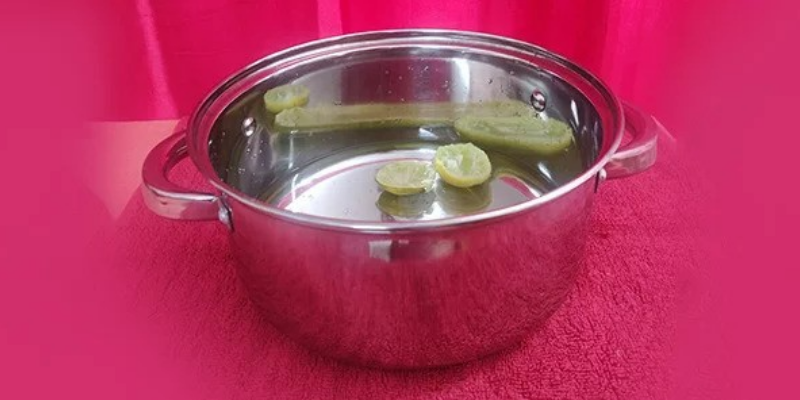
- Mixing oil with Eno gives it some time to initiate its reaction, or else the reaction completes before you pour the batter into the pan. It aids the batter to rise well.
- After mixing Eno in the batter, pour it into the greased pan to set in the steamer.
- While the dhoklas are getting ready, prepare the tempering to manage time.
- Flipping the dhokla in the pan before pouring the tempering on it brings the porous side on top. The tempering will seep in the dhokla much better.
- Don’t expect your dhoklas to be spongy like khaman. Khaman is made up of gram flour. Dhoklas are prepared from mixed grains.



